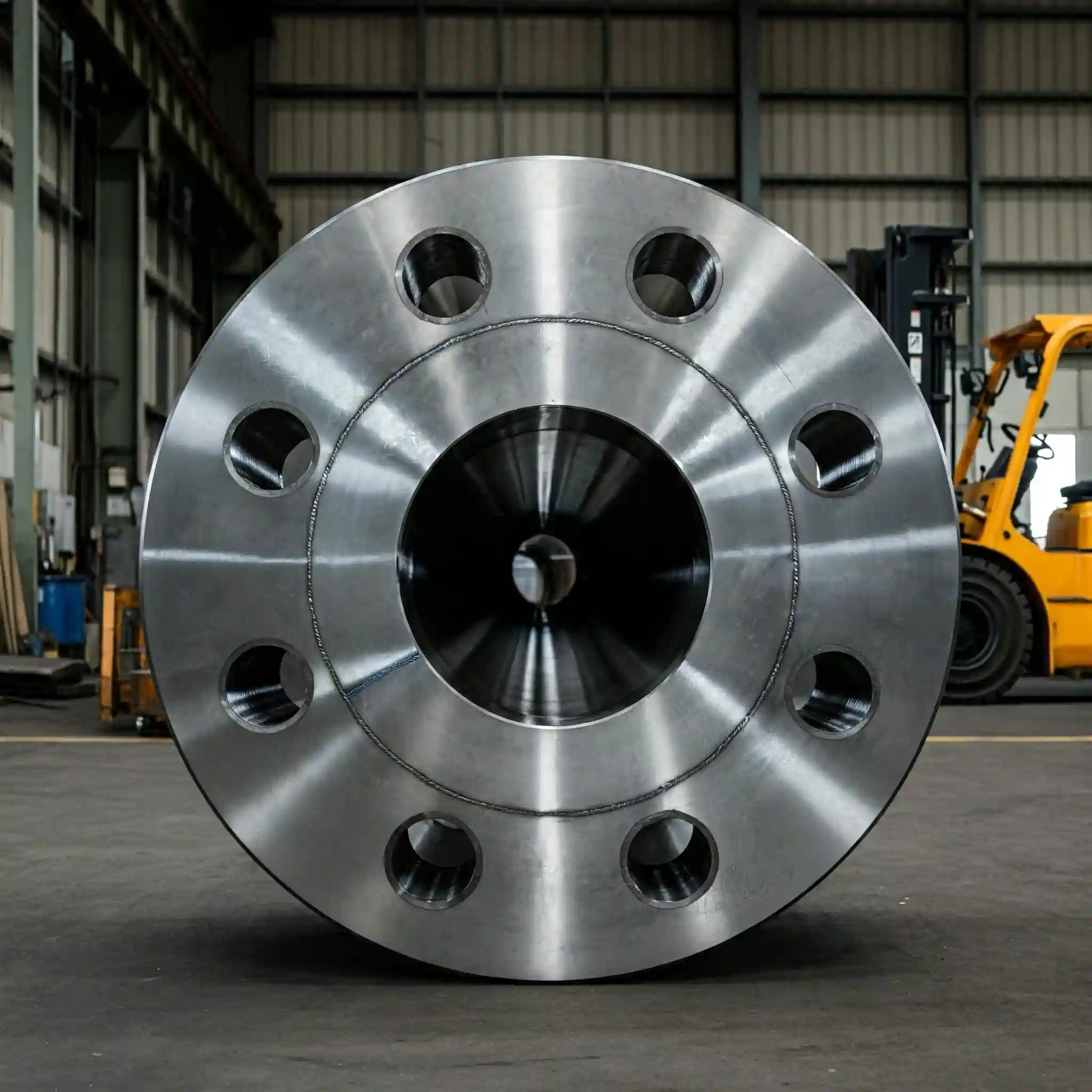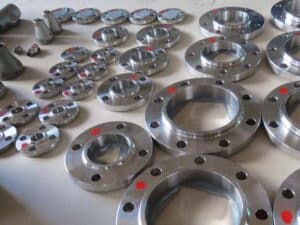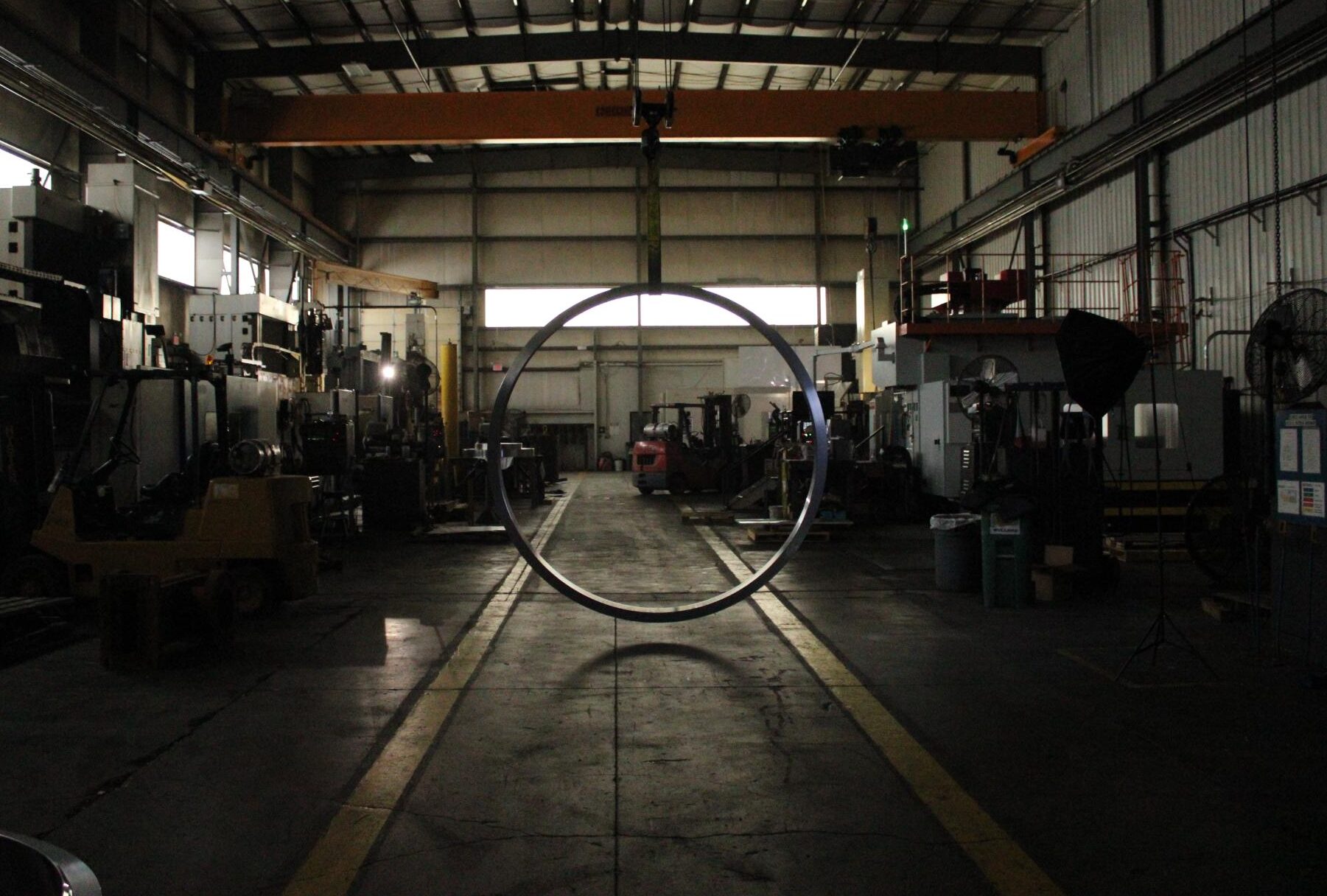
A Slip-on Flange is a flange connection commonly used in piping systems. Flanges join two pipes or connect a pipe to a component, such as a pump or a valve.
Several flange connections include slip-on flange, weld neck flange, threaded flange, and lap joint flange. Each type of flange has its unique advantages and disadvantages, but slip-on flanges are known for their ease of installation and low cost.
- Slip on Flange Dimensions and Pressure Rating
- Slip on Flange Material Type
- Applications of Slip-on flanges
- Slip-on flange Installation
- Frequently Asked Questions: Slip-on flange
Slip on Flange Dimensions and Pressure Rating
Slip-on flanges come in standard dimensions, the most common being Class 150 and Class 300. The dimensions of a slip-on flange include the following:
- The diameter of the flange.
- The thickness of the flange.
- The height of the flange.
The pressure rating of a slip-on flange is determined by its material, size, and wall thickness. Class 150 slip-on flanges have a maximum pressure rating of 285 psi, while Class 300 slip-on flanges have a maximum pressure rating of 740 psi.
Slip on Flange Material Type
Slip-on flanges are typically made from carbon steel, stainless steel, or other corrosion-resistant materials. The choice of material depends on the specific requirements of the piping system, including the temperature, pressure, and corrosive environment.
Carbon steel is a strong and durable material commonly used in the construction of slip-on flanges. It is resistant to high temperatures and can withstand corrosive environments. Stainless steel, on the other hand, is highly resistant to corrosion and is commonly used in applications with high levels of hygiene.
Other materials used for slip-on flanges include alloy steel, bronze, and plastic. The choice of material depends on the system’s specific requirements, including temperature, pressure, and corrosive environment.
In summary, when selecting a material for a slip-on flange, it is essential to consider the system’s specific requirements and choose a material that can withstand the conditions it will be exposed to.
Applications of Slip-on flanges
Slip-on flanges are used in a wide range of piping applications due to their ease of installation, versatility, and cost-effectiveness. Some common applications of slip-on flanges include:
- Process piping systems
- Power plants
- Chemical and petrochemical plants
- Oil and gas pipelines
- Marine and offshore platforms
- HVAC systems
- Water treatment plants
- Food and beverage processing plants
- Pharmaceutical and biotech facilities
- Fire protection systems
In process piping systems, slip-on flanges are used to connect pipes and facilitate the flow of liquids, gases, and other materials. In power plants, slip-on flanges are used to construct boilers and other high-pressure systems.
In chemical and petrochemical plants, slip-on flanges are used to transport corrosive and hazardous materials. In oil and gas pipelines, slip-on flanges are used to connect pipes and transport petroleum products.
In HVAC systems, slip-on flanges are used to connect ducts and other components. In food and beverage processing plants, slip-on flanges are used to transport food and beverage products.
In summary, slip-on flanges have a wide range of applications and are used in many industries to connect pipes and facilitate the flow of materials. The choice of a slip-on flange depends on the specific requirements of the system and the materials it will be transporting.
Slip-on flange Installation
The installation process is as follows:
- Clean the flange surface and pipe end
- Check the flange and pipe dimensions to ensure compatibility
- Slide the flange onto the pipe end until it is fully seated
- Align the bolt holes on the flange with the pipe
- Insert bolts into the flange and tighten with a wrench or socket
- Torque the bolts to the specified value to complete the installation.
Frequently Asked Questions: Slip-on flange
Can slip-on flanges be used in high-pressure applications?
It depends on the material and thickness of the flange, as well as the size and pressure of the system. Slip-on flanges can be used in high-pressure applications if they are rated for the specific conditions.
How is a slip-on flange connected to a pipe?
A slip-on flange is connected to a pipe by welding the flange to the end of the pipe.
What are the benefits of using a slip-on flange?
- Easy installation
- Low cost
- Available in a wide range of materials and sizes
Are slip-on flanges threaded?
No, slip-on flanges are not typically threaded. They are designed to slide over the end of a pipe and then be welded in place.
What is the difference between slip-on and weld neck flange?
The difference between a Slip-On flange and a Weld Neck flange lies in their design and intended application:
Weld Neck Flange: It has a neck that is welded to the pipe, providing a more secure connection. It is suitable for high-pressure and high-temperature applications and is often used in the petrochemical, chemical, and oil and gas industries. The long tapered hub of the Weld Neck Flange provides high resistance to stress, making it the strongest type of flange available.
Slip-On Flange: It is designed for easy and quick installation and has a circular disk with a bore that allows it to be slipped over the end of a pipe. It is secured in place with fillet welding and is ideal for low-pressure applications.
In summary, the Slip-On Flange is a convenient and cost-effective option for low-pressure piping systems, while the Weld Neck Flange is stronger and better suited for high-pressure applications.


